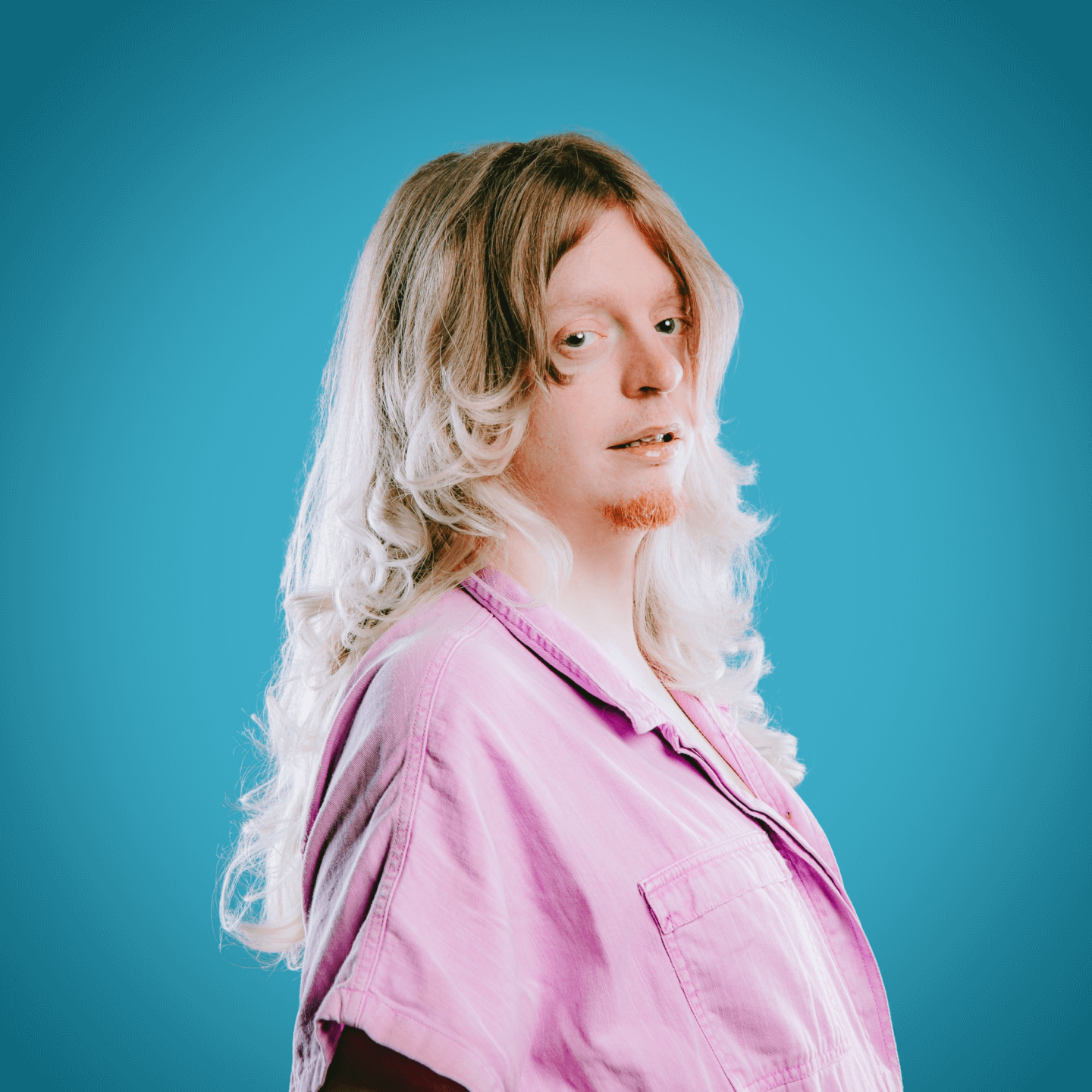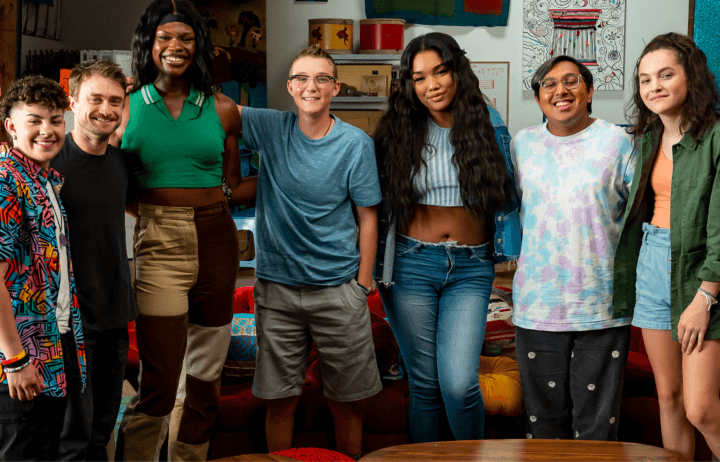Youth's Lives Every Day
Written by Sue Cardenas-Soto (they/them), Copywriter
Daniel Quasar (they/ze) calls themselves an “accidental designer,” but they’re definitely one who has made an impact on LGBTQ+ history. Quasar designed the Progress Pride flag in 2018, an updated design that incorporated Monica Helm’s Trans Pride flag, the traditional Gilbert Baker Pride flag, and elements of Philadelphia and Seattle’s Pride flags. The trans flag stripes and black and brown stripes were shifted to the hoist and given a chevron shape, pointing to the right to symbolize forward movement.
SUE: Can you tell me about the process of designing the flag?
QUASAR: I was (still am) a connoisseur of insomnia. And oftentimes, I find that I am most creative in the middle of the night. It was 2 a.m. and I just had the idea. I knew about Philadelphia’s flag from the year prior. In the week that I did my version, the city of Seattle released their own version of The Pride Flag, which was Philadelphia’s flag with the trans stripes on top. I thought that was really cool; the messaging is really great. I wondered if there’s some way that I can utilize the components of what they’re doing and redesign it in a way that will emphasize their message, just to see if there was some way I can enhance it. By doing that, I ended up adding in my own messaging of the progression. I made the Progress flag, and 14 or so different other designs which were plays off of that original design. A friend of mine and I used to be up late at the same time. We would often chat and keep each other company online. I was bouncing [the designs] off of her and getting some feedback and I ended up liking the original one best.
SUE: What was your mental health like at the time?
QUASAR: It was a really interesting turning point in my life. I had just discovered that I was given “the family gift,” which is what I call it, where I learned that I was severely agoraphobic and had a panic disorder. I’m okay now, but at that point in my life, I was so riddled with anxiety. It was a complete 180 from the type of person I was prior to that. And so at the same time, I make this flag design and it goes viral. My essence and the things that I did are spreading across the world when I can’t even leave my own house because I’m too anxious.
SUE: That can’t have been easy. What was the response to the design like?
QUASAR: It was wild, I’ll tell you that. My phone ran out of battery three times that day because it wasn’t keeping up with just the notifications and buzzing. And the reactions were overwhelmingly positive. I did get a lot of people saying,”I would love to see I want a real flag of this. How can I get a flag of this?” I did also get some criticisms which were totally valid. In hindsight I probably should have handled them better, but I was dealing with a lot of mental health issues. It was also my first time ever going viral. It’s really hard to figure out how to deal with not just the critical stuff but also the positive stuff.
SUE: You’re quite humble about your place in LGBTQ+ history, but what do you think about that?
QUASAR: It still is baffling to me that I am that person. I once had a friend, who was looking up Gilbert Baker on his birthday — when you do a Google search on a person, they’ll often show other people — it was Marcia P. Johnson, some other amazing historical figures, and I was also there. He was like, “Look at you here on the Mount Rushmore of queer historical figures.” I don’t know how to take that.
At the same time, I’m trying to give myself grace and accept that I did something cool and it’s okay to feel cool about it. For the first chunk of years, I didn’t even want my face attached to anything when I presented the flag out to the world. In the last year or so, I’ve been trying to reorient that. I want to be like, yeah, I did do that thing. And it’s okay for me to acknowledge that and be vocal and proud about it.
SUE: And now you’re a part of a pantheon of Pride flags.
QUASAR: It was never my intention for my flag to be a replacement for the original Pride flag. Something I noticed going to Seattle Pride this year was that all Pride flags were being flown; the Philly flag, the Intersex Inclusive flag, Gilbert Baker’s original version, and so many others. It was incredible to me; I had an epiphany that all of these flags matter to each person and they’re flying them for their own reasons. It just shows the grand diversity and sheer individualism that we have within our community that is so beautiful. I wasn’t mad that I didn’t see my flag being flown. When they’re all together, it’s a sea of rainbows anyways.
Sue Cardenas-Soto is a Copywriter at The Trevor Project, the leading suicide prevention and mental health organization for lesbian, gay, bisexual, transgender, queer & questioning (LGBTQ) young people. If you or someone you know is feeling hopeless or suicidal, our trained crisis counselors are available 24/7 at 1-866-488-7386 via chat www.TheTrevorProject.org/Get-Help, or by texting START to 678-678.


